Fantasy Football 2025: WR Nico Collins player profile
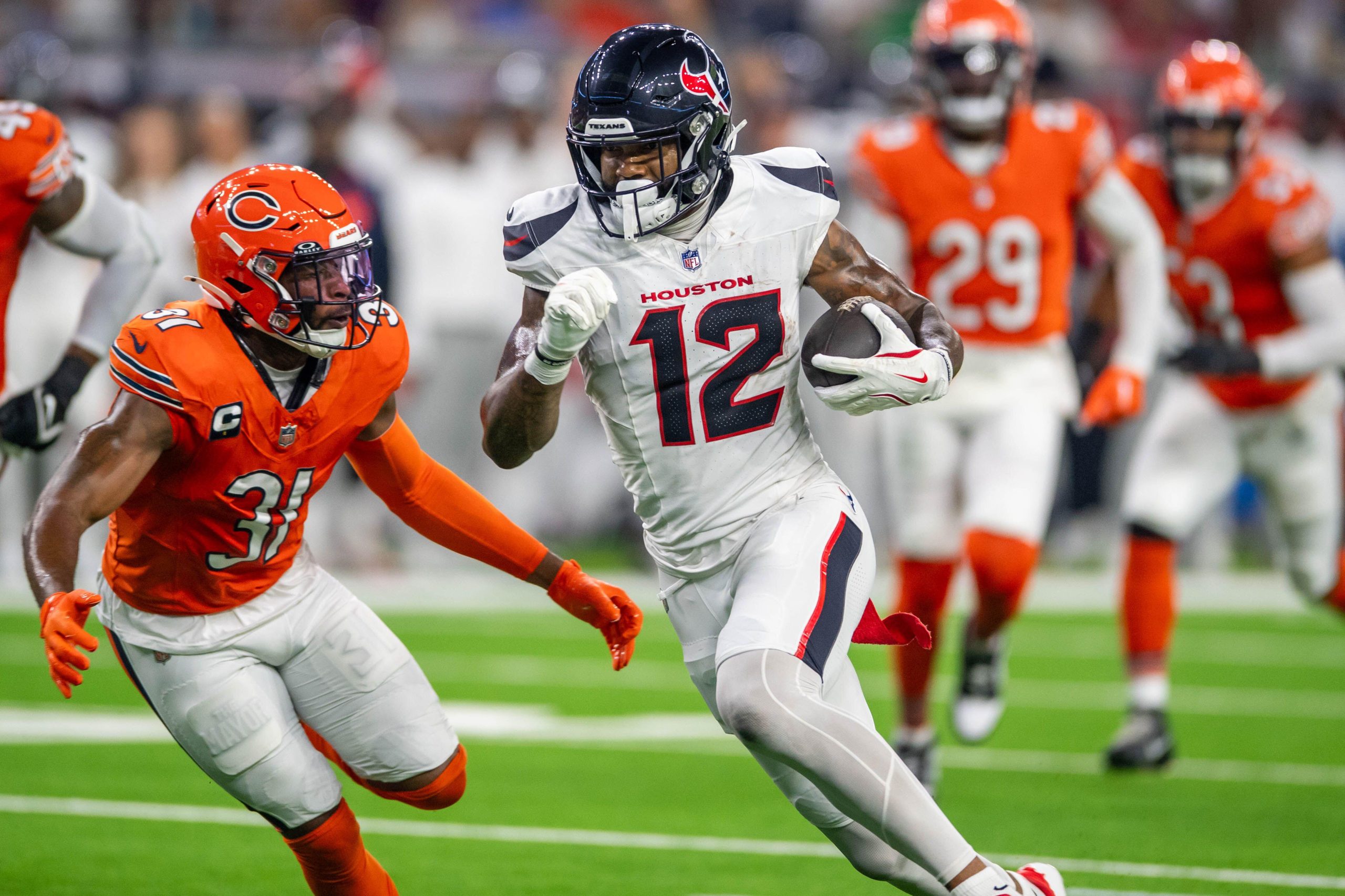
2Y4300D USA. 15th Sep, 2024. September 15, 2024: Houston Texans wide receiver Nico Collins (12) runs past Chicago Bears safety Kevin Byard III (31) for a touchdown during a game between the Chicago Bears and the Houston Texans in Houston, TX. Trask Smith/CSM/Sipa USA(Credit Image: © Trask Smith/Cal Sport Media/Sipa USA) Credit: Sipa US/Alamy Live News
By
- Nico Collins is among the league’s top wide receivers: Collins has posted a 93.2 receiving grade over the last two seasons combined, which ranks first among all wide receivers.
- His injuries have held him back: Collins has missed time each season. Playing a few partial games in 2024 has notably hurt his 2024 per-game statistics.
- Subscribe to PFF+: Get access to player grades, PFF Premium Stats, fantasy football rankings, all of the PFF fantasy draft research tools and more!
Estimated Reading Time: 5 minutes
PFF’s Fantasy Football Player Profile series delivers the most in-depth fantasy football analysis available for the 2025 season.
Using PFF’s exclusive data, we evaluate player performance, competition for touches and how teammates and coaching staffs will impact each player’s fantasy football outlook.
Last updated: 7:15 a.m. Wednesday, May 7
Click here for more draft tools:
Player performance
Collins was a third-round pick by the Texans in 2021 and immediately started playing a minimum of 55% of the Texans’ offensive snaps. In 2022, he was in a rotation with Brandin Cooks, Chris Moore and Phillip Dorsett. In 2023, Houston moved on from all three other receivers and added C.J. Stroud at quarterback. This was enough for Collins to completely break out.
His target rate only increased slightly, but his catch rate increased from 57.8% to 73.4%, thanks to higher quality passes. His average depth of target decreased slightly, but he became much more elusive, leading to an elite avoided tackle rate. This led to more yards after the catch, ultimately leading to more yards per reception. In 2024, Collins didn’t make quite as many big plays but was more consistently receiving positive grades when targeted, and he was targeted even more often.
Collins has 0.612 fantasy points per route run in PPR leagues, which is the best for wide receivers over the past two seasons. This includes the most yards per route run at 3.0 and the second-most touchdowns per route at 0.02. When he can get open, there has been no receiver better in recent seasons. However, he’s not able to get open as often as other receivers, and he’s not as successful as plenty of other receivers when he’s not open.
The main problem is that Collins runs fewer routes than other receivers, so he’s only finished seventh and eighth in fantasy points per game over the last two seasons. Collins has also missed at least two games in every season and averaged over four games per season. This has led him to finish even lower in total fantasy points each season. However, it’s worth noting Collins’ per-game numbers from 2024 are deceiving because of games where his time was limited. He played nine snaps in Week 5 prior to injury, 30 snaps in Week 11 returning from injury and 11 snaps in Week 18 with a playoff spot clinched. He was often playing over 80% of the snaps for the rest of the season. He averaged 18.9 fantasy points per game, removing those three games, which would have ranked third last year. He also averaged 19.1 points per game in the NFL playoffs.
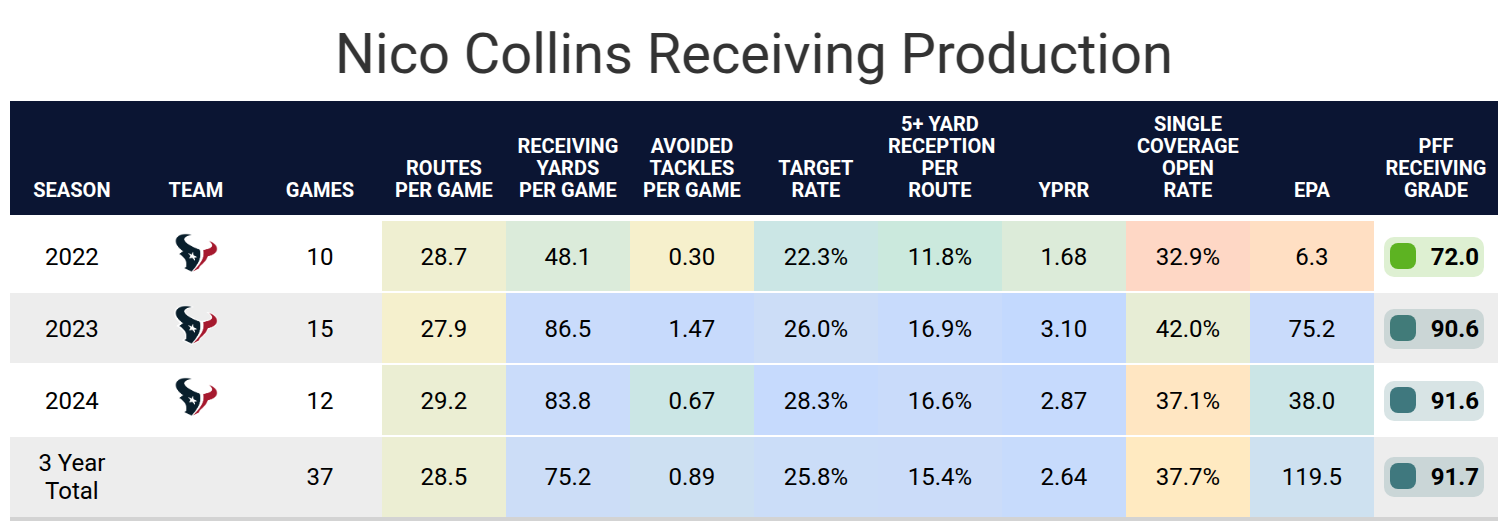

Projected role
Collins has been the Texans’ X receiver throughout his time with the team. Tank Dell was the primary Z receiver, and Stefon Diggs was the slot receiver last season. Diggs moved on to the New England Patriots, while Dell will likely miss the entire season due to injury. The Texans have added several receivers to try upgrading from incumbents John Metchie III and Xavier Hutchinson. This includes trading for Christian Kirk, adding Justin Watson and Braxton Berrios, and drafting Jayden Higgins and Jaylin Noel on the second day of the NFL draft. At least two of those players won’t make the Week 1 roster.
None of those players should limit Collins’ target rate. If anything, losing Dell and Diggs could lead to an increase in target share. Outside of Collins, passes should be relatively evenly distributed between the other players. The one concern is second-round rookie Higgins. He is also an X receiver, who many compared to Collins. Higgins could line up across from Collins on the outside, could be an insurance policy for when Collins is injured, but could also take some snaps away from Collins.

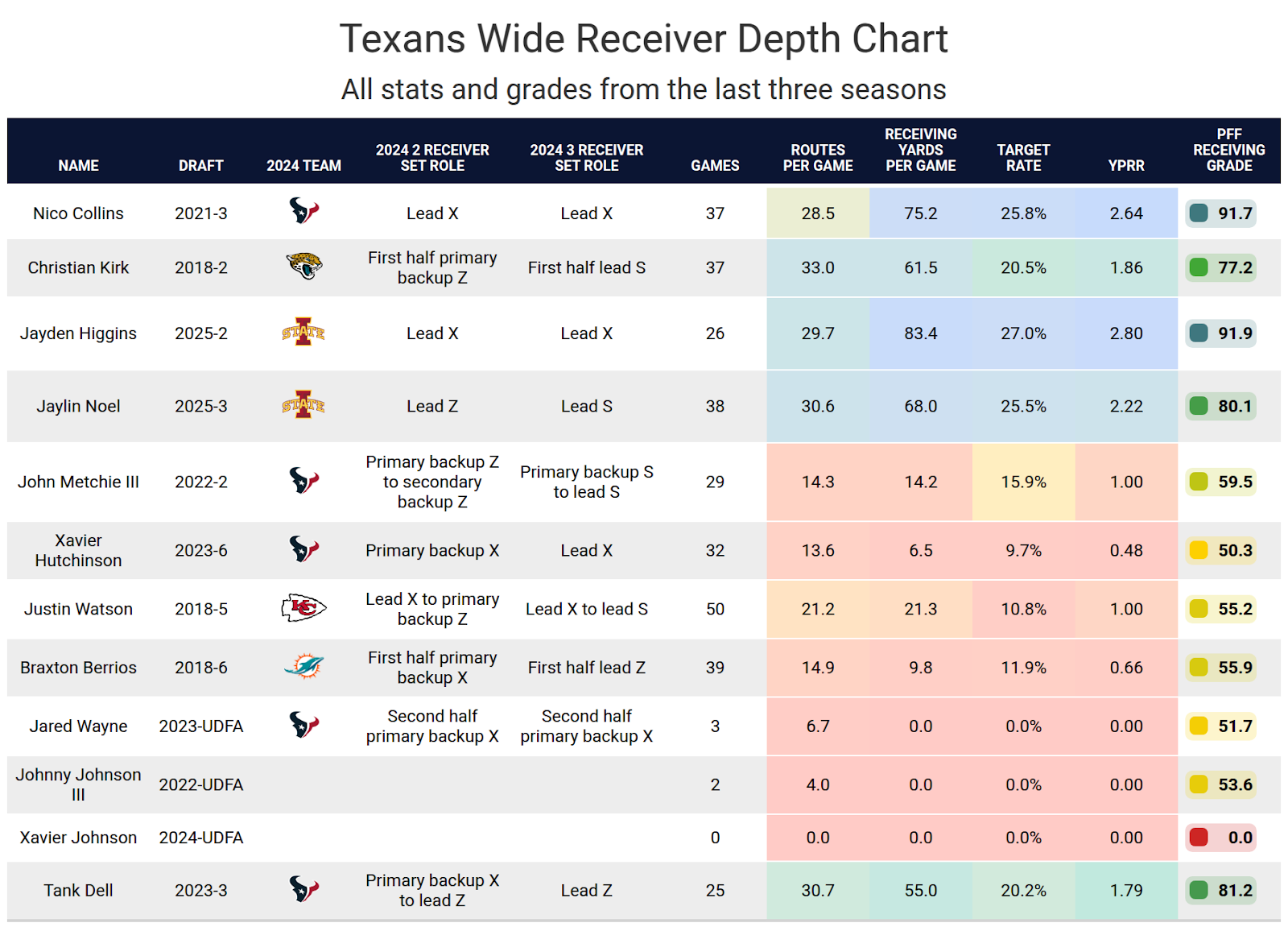
Impact of teammates
The Texans swapped out offensive coordinators, bringing in Nick Caley, but Ben McDaniels remained the wide receiver coach and passing game coordinator, a job he’s held since 2022. Caley has never been the lead offensive coach for a team, so we haven’t seen exactly what his vision looks like, but his past teams have relied heavily on three-receiver sets.
The big question is how much playing time Collins will get in Caley’s offense. It’s possible his limited playing time in the past was a coach’s decision by previous coaches, but it’s also possible that the Texans know something about Collins, particularly with his injury history, and know they need to limit Collins’ snaps. Caley has been around wide receivers playing at least 85% of offensive snaps regularly before, so a notable increase in snaps for Collins is at least possible.
Collins will continue catching passes from C.J. Stroud, as he’s done the past two seasons. Stroud went through a little bit of a sophomore slump, particularly when Collins was injured. From Week 13 until the end of the playoffs, Stroud had the ninth-highest PFF passing grade. Multiple other wide receivers who are expected to get drafted in the first round of fantasy drafts have quarterbacks in their 30s. Collins is one of the few first-round wide receivers for whom it’s realistic to expect an improvement from their quarterback.
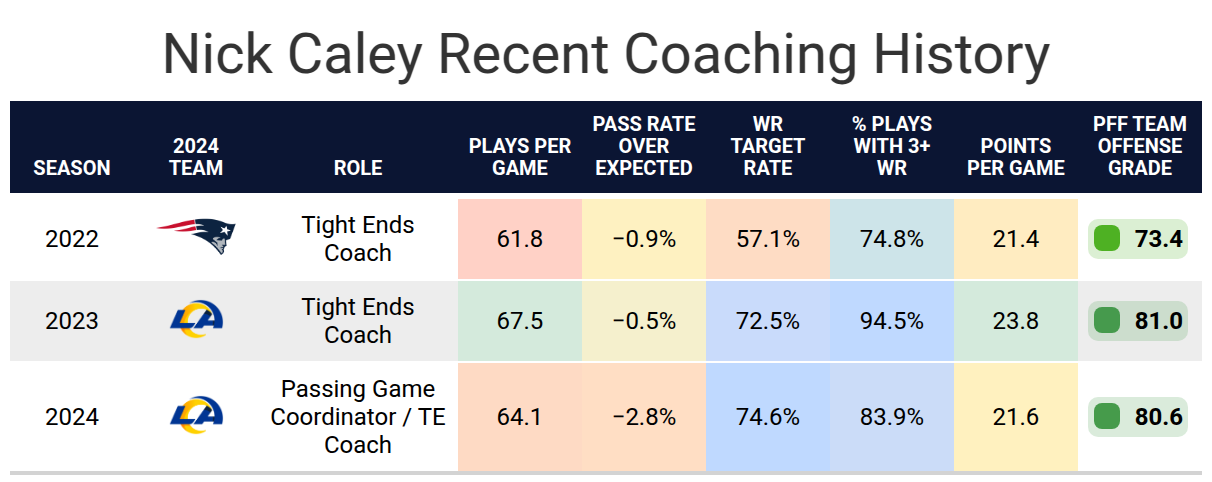
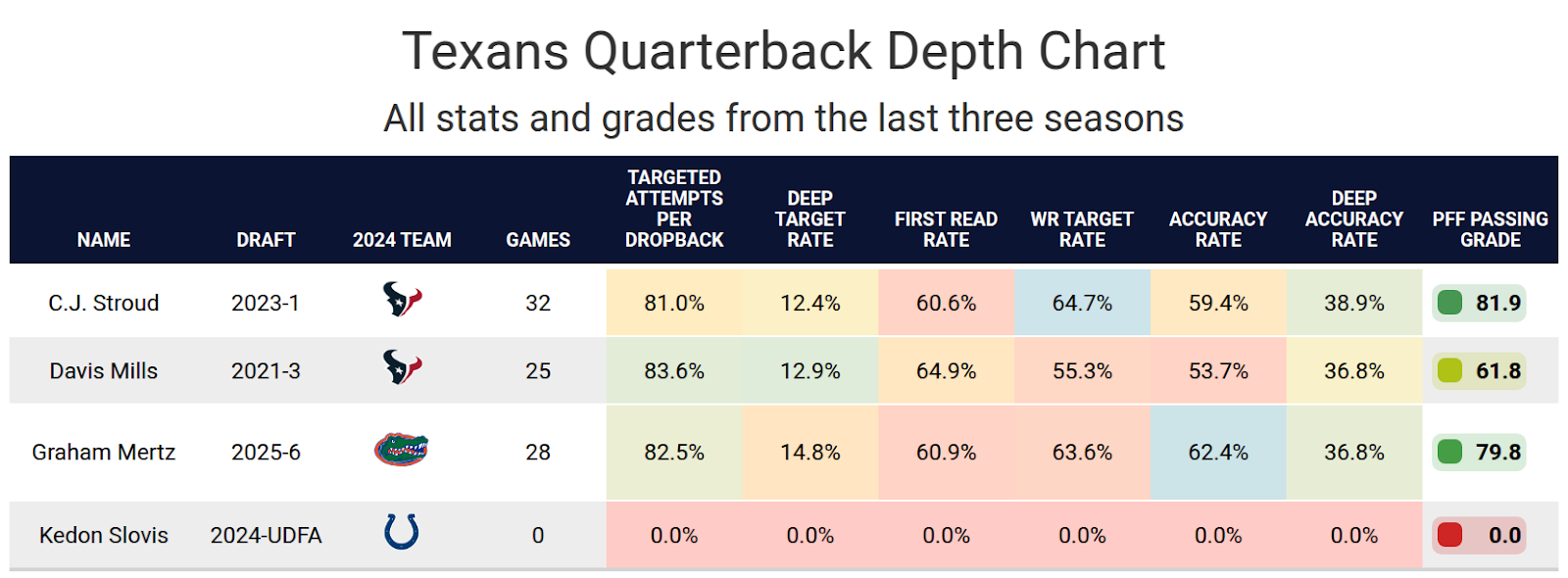
Bottom line
Collins is a very talented wide receiver with a history of top-10 success. There is reason to believe he can improve with more playing time or an improvement from C.J. Stroud. The main concern is his injury history, where he’s missed time each season.

Footnotes
- Statistics in tables and charts were chosen based on their ability to predict future fantasy performance on a per-game or per-opportunity basis or to describe the player relative to others at the same position.
- “Opportunities” are defined as passing dropbacks, rushing attempts and routes run as a receiver.
- Numbers are provided either by season or based on the past three years. For rookies, only college statistics are included. For non-rookies, only NFL statistics are considered, regardless of whether they played in college within the previous three years.
- As college competition is easier than NFL competition, most rookies are likely to see a decline from their historical numbers.
- Only FBS data is considered for college players and comparisons.
- Kneel-downs are removed from rushing data to provide cleaner quarterback rushing rate statistics.
- The table colors in this article range from blue (indicating good/high) to red (indicating bad/low).
- All percentiles and color codings compare the given player to others with a high sample of opportunities. Generally, the cutoff is one-third of the possible opportunities in the sample. If a player does not meet the threshold, they are still included in the comparison, though their results may appear better or worse than expected due to the smaller, less predictive sample size.
- Information on utilization classifications and their importance can be found here for running backs, wide receivers and tight ends.




